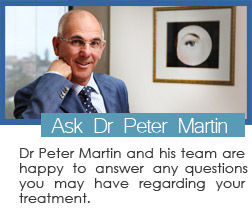
Anophthalmos
Why may Enucleation be necessary?
It is very rare to be born with an eye missing, however, it may be necessary to enucleate an eye (at any time in life) because of trauma, infection or disease (such as ocular or orbital cancers, blind or painful eyes).
What can I expect after surgery?
Removal or loss of an eye is a very traumatic time for both yourself, as the patient, and your family. It is important to realise that everyone reacts differently and emotional upsets can be expected.
Following surgery the eyelids may be swollen and bruised for up to 2 weeks. Icepacks may be applied to the lids for comfort. An eye pad should be worn as you may have a blood stained watery discharge from the socket for several days. The socket must be cleaned and ointment/eyedrops instilled as directed by Dr Martin.
Judging distances may prove to be difficult as your depth perception may be affected. For this reason you should take particular care on stairs, in the street, or when pouring liquids etc. You must NOT drive until you have been given approval by Dr Martin.
Dr Martin will give you a referral to an artificial eye-maker, usually 4-6 weeks after the operation, to provide a good cosmetic appearance. The eye-maker will arrange the making of the prosthesis and explain the care of the prosthesis.
Many different materials are used to create ocular implants/prostheses.
The most common materials currently used include:
- Hydroxyapatite – This is a calcium phosphate hydroxide compound. This material is porous and allows blood vessels to grow around it, essentially making it part of the eye socket.
- Silicone
- Glass
- Fat grafts from elsewhere in the body.


